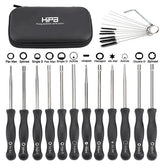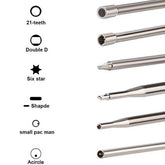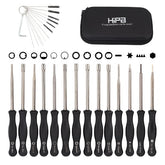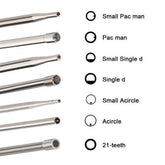What to Check Before Buying a Second-Hand Gas Chainsaw
Buying a used gas chainsaw can save you money, but even if it starts and runs, that doesn’t always mean it’s in good condition. To avoid expensive repairs later, here are the key things you should pay attention to before handing over your cash:
1. Compression and Starting
A healthy chainsaw should have good compression — you’ll feel strong resistance when you pull the starter cord.

2. Piston and Cylinder Condition
Remove the muffler and look at the piston through the exhaust port.

The intake side may look clean, but if you see scoring or scratches on the exhaust side, it’s a sign of overheating or poor lubrication. That usually means trouble down the road.
3. Chain, Bar, and Sprocket Wear
Check if the bar groove is straight and not pinched.
Look for excessive wear on the sprocket teeth and if the chain is still sharp and properly tensioned.
Worn-out bars and sprockets can make cutting inefficient and dangerous.
4. Fuel System
Inspect the fuel tank, lines, and primer bulb for cracks or leaks.
A bad fuel line or clogged carburetor may not stop the saw from starting, but it will cause issues once you actually use it.
5. Air Filter and Exhaust
A dirty or missing air filter lets dust into the engine, shortening its life.
Make sure the spark arrestor screen isn’t clogged with carbon, which can restrict power.

6. Overall Handling
Check for loose handles, cracked plastic, or missing bolts.
A chainsaw that looks abused on the outside has likely been neglected inside too.
Final Tip
If possible, test the saw under load (cutting a log). A chainsaw might idle fine but bog down under pressure, which is a red flag for carburetor or engine problems.
Buying second-hand can be a smart choice — just don’t let a smooth start fool you. With a careful inspection, you’ll avoid hidden problems and get a saw that’s ready to work, not ready for the repair shop.






















